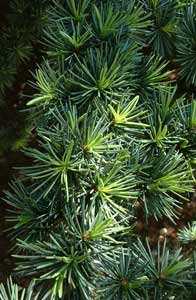Natural Tick Repellent for Family, Dog and Lawn
Our experts discuss natual tick repellent tips

This site is supported by affiliate advertising. Which means we may earn some money if you click the product links. Thanks for your support!
Over the past few years there has been an explosion of interest in ticks and tick related diseases. The cases of tick borne diseases such as Lyme disease, Rocky Mountain Spotted Fever, ehrlichiosis, and human tick paralysis are increasing. Natural tick repellent can help anyone in tick country reduce their exposure to ticks. Some tick born diseases such as Lyme disease can even have life long ramifications.
Essential Oils For Natural Ticks Repellent
This article will help you separate fact from fiction and provide you with research to make an informed decision. However if you just want a quick natural tick repellent recipe here’s the abbreviated version.
Natural Tick Repellent Supplies
The first step is getting the right supplies. A basic natural tick repellent essential oil recipe consists of:
- 1oz 90 proof alcohol
- 2 and 3/4 oz distilled water
- 1 and 1/2 tea spoon Cedar Oil
The alcohol and distilled water you should be able to find locally. Cedar oil is a bit more difficult to find. You can use the like above or photos below to pick this up on amazon. Ticks are a year round issues so order some essential oil now and mix up a batch of natural tick repellent ASAP.
Natural Tick Repellent Spray
After making the essential oil mix you need a spray bottle. If you just want to test your mix use a spray bottle that will not need to be reused for anything else. Once you are happy with the results be sure to transfer the mix to a dark glass bottle, and store it in a cool and dark location. Heat and light will degrade the potency of your mixture.
Thats it. Simply apply this mix every two hours and you will have a family friendly natural tick repellent. If your interested in the research behind this recipe please keep reading. If not just remember to keep this away from small children and pets.
Quick Tick Repellent Tips
Tickscape your yard by keeping the lawn trimmed, clean up debris such as dead leaves, and use crushed stone borders between the lawn and wooded areas. Use Essential Oils to create a spray on natural tick repellent. Check for Ticks each time you come in from tick prone areas.
Tick Trends
Trending Google searches revel the impact of ticks on the the general public. The chart below shows interest in the term “tick repellent” over the past ten years in the United States.

To further illustrate the effect of ticks on public health consider the rate of Lyme Disease as reported by the CDC. Based on CDC records, the reported and suspected cases of Lyme Disease have more than doubled between 2006 and 2016. Clearly, ticks are having a profound effect on public health and psyche. This begs the questions:
- Why are ticks now so prevalent?
- Whats the best natural tick repellent?

A Brief History of Ticks
Ticks are native to North America. However their impact on the general human population has not always been as acute as today. In 1749 the Swedish naturalist Pehr Kalm reported that North American forests were overflowing with ticks. Then in 1872, American historian and entomologist Asa Fitch noted the drastic reduction in tick population in the same area surveyed by Pehr Kalm.
During the century between these two surveys America experienced the industrial revolution which saw vast stretches of forest turned into farm land. This, along with hunting, reduced the population of white-tailed deer which is one of the primary host animals for ticks. Reducing native habitat and consequently the white-tailed deer population resulted in the near extinction of ticks.
In the later part of the twentieth century the white-tailed deer population rebounded due to conservation. At the same time, urban sprawl continued to push further into forested areas. This brought ticks and humans into closer contact. The confluence of these events resulted in more tick bites and a surge in tick born illnesses.
Understanding Ticks
Ticks are considered arthropods with one main body segment. This places them in the same classification as daddy long legs and scorpions. Amazingly, ticks do not hibernate and are active year around when its above freezing. To find a host ticks climb grass and other plants and wait for an animal or person to pass by. This behavior is called questing.
How Ticks Find Hosts
Ticks detect hosts (AKA victims!) by chemical signals such as sweat and carbon dioxide. Since they are not able to jump or fly ticks need to make direct contact with their host. At that point the tick climbs the host to where it will eventually latch on. Since ticks need to make direct contact with a host you can limit your exposure by not brushing against vegetation.
This means when your walking out doors simply limiting your contact with high weeds, wooded areas, and lawn debris can help reduce your exposure to ticks. Contrary to urban myths you do not get ticks from just being out side. You need to come into direct contact with the questing tick.
Ticks require high humidity which keeps them near the ground and away from dry, sunny areas. To avoid the sun tick seek out shady wooded areas and high weeds. Now that we understand ticks and their habitat, let’s review strategies for controlling and managing ticks.
Tick Management
Unfortunately, ticks are will not be going away anytime soon. No matter how many you kill they will keep on coming back. However, it’s possible to reduce the chances of exposure to ticks by taking steps to create an environment around your home that is unsuitable for ticks. Tick Management (TM) is a three step process. TM consists of:
- Tickscaping
- Natural tick repellent
- Protection and detection
- Tickscaping
The first step in TM is Tickscaping. Tickscaping entails making making modifications to your environment to prevent and repel ticks. This is accomplished by using tick habitat requirements (dense woods, high humidity, and shade) against them. For example, since ticks prefer dense humid woods, create a dry sunny barrier between yourself and the woods. Lets look at some specific real world examples.
To include tickscaping in your landscaping think in terms of high and low risk zones. For a home bordering woods, the woods and the land immediately adjacent to the woods is the high risk zone. Remembering that ticks need shade and humidity, we can buffer the high risk zone buy creating a border between the woods and the lawn. Stone or mulch make an excellent border along wooded areas. In addition clear branches to create a dry sunny area that ticks will generally avoid.

Now moving towards the house from the stone border, you will want to have as much light as possible as bright sunny areas are less likely to harbor ticks. You should also remove leaf clutter or firewood piles on the ground. These piles create pockets of cool humid areas that harbor ticks. The yard should become more manicured, with stone and hardscape as you approach the house. In simple terms, tickscaping your yard equates to a clean, tidy, and sunny yard with clear borders between people space and wild space.
An additional benefit of these tickscaping recommendations is that you will also reduce rodent habitat. Since rodents, especially mice, are part of a ticks life cycle, clearing out yard debris will make your yard less inviting to rodents and the ticks they bring with them. In addition to rodents, make sure you’re not inviting deer or birds to your lawn. Deer are also part of the ticks life cycle and birds can carry ticks. So cut back on the bird feeders, or use them only in winter. For additional details on tickscaping your yard, check out our article How To Get Rid Of Ticks In Your Yard.
Ticks generally do not thrive indoors, however to ensure they don’t, its good to keep tickscaping principles in mind indoors. Ticks can not drink water so they need humidity levels above 70%. To keep ticks out of your house naturally, take advantage of this need. Using an conditioner in your main living area will help reduce humidity. For your basement we recommend running a dehumidifier.
Reducing indoor clutter is also important. Just as cleaning up leaf piles outdoors reduces ticks, eliminating clutter indoors reduces the hiding places for ticks (and fleas). In fact, simply vacuuming has been proven to kill both fleas and ticks.
Select A Natural Tick Repellent
The second part of TM is using natural tick repellents. For this article, we are going to stick to products derived from plants. Just like we used the ticks habitat against them for tickscaping, we’ll use their sense of smell against them to craft natural repellents.
In the past few years, researchers have identified several natural elements, such as essential oils, that have the ability to mask host chemical signals and at times even kill ticks. The natural tick repellents below are backed by research and customer feedback. CAUTION! While natural, essential oils and diatomaceous earth still have side effects. Please carefully consider the linked research before using and do not apply them to children under 3 years old.
Essential Oils for Natural Tick Repellent
- Lemon Eucalyptus Oil from the Lemon Eucalyptus tree found in northeastern Australia. Used in many over the counter bug repellents and sprays. It works by masking the chemicals such as carbon dioxide from breathing and lactic acid in sweat ticks normally use to find their victims.
Research: CDC.gov

- Geranium Oil has been used for thousands of years by many cultures such as the Egyptians to promote healthy skin along with improved physical, mental, and emotional health. More recently, it has also been found to be an effective insect and tick repellent. The study cited below tested 10 different types of geranium oils and found them to be effective tick repellents.
Research: USDA.gov

Cedarwood oil is extracted from various species of cedar trees. Cedarwood oil is often used for its anti-inflammatory, sedative and insecticidal properties. In the study referenced below, researchers found cedarwood oil to be an effective repellent for ants and ticks. In addition, it was found to kill black-legged tick nymphs.
Research: Bioactivity of Cedarwood Oil and Cedrol

Repellents with Mixed Signals
Citronella Oil and Garlic Oil are often found in tick repellent recipes. However there are mixed reviews on each. Due to their popularity, they are included in this list for informational purposes only.
- Citronella Oil is extracted from the Cymbopogon nardus plant, also known as Citronella Grass. It’s important to note this is not the potted ornamental citronella plant sold in most garden centers.Citronella Grass is a fast growing grass reaching up to 6 feet high. Citronella Oil is one of the most common natural insect repellents in the United States, however its effectiveness is questionable.
Research: Thehealthyhomeeconomist.com Onlinelibrary.wiley.com - Garlic Oil is regularly mentioned as a tick repellent. There is some research demonstrating the positive effects of garlic oil as a tick repellent however, conflicting research exists claiming it is not effective. Some studies even claim that eating garlic will help repel ticks, if not your fellow hikers Since garlic is a staple in many diets it deserves mention. Please review the research and decide for your self.
Research: jsava.co.za Garlic as an Insect Repellent www.ncbi.nlm.nih.gov
Application of Essential Oil Tick Repellents
Now that we know what to use, let’s consider how to use them. Each of the previously discussed essential oils contains different compounds and so will have different effects when applied. It’s important to remember that essential oils are meant to be diluted and diffused. This creates an even application and helps prevent skin iteration that can result from using some oils at full strength.
Natural Tick Repellent Spray

|
For personal protection against ticks it’s necessary to apply repellent to your clothes. If you never used essential oils before, first test a small amount to ensure you are not allergic. Also, remember that essential oils should not be used on children under 3 years old. If your not allergic and over |
| 3 years old, use this natural tick repellent recipe to make a spray. Use these links for great deals on the scientifically backed essential oil tick repellents. | |
Natural Tick Repellent for Yard

|
There are several natural tick repellents that can be used on lawns. Cedarwood oil is our top choice to repel ticks outdoors for two reasons: 1. as there is abundant scientific research backing its tick repellent claims. Refer the links above to review this research; 2.Cedarwood oil not only |
| repels ticks but also kills them. There are several premixed cedarwood oil lawn applications available online. One of the more popular is YardSafe Cedarcide. Simply attach your garden hose and spray down the areas where you want to repel ticks. Its simple, easy, and effective. | |
Natural Tick Repellent for Dogs

|
When considering a natural tick repellent for dogs there are a few things to remember. First, dogs have a different physiological composition then humans, so what is safe for humans is not always safe for dogs. Second, anything sprayed on a dog |
| will likely end up in their mouth since licking is part of their natural behavior. Third, their sense of smell is a 1,000 times stronger then ours. So the nice aroma you just sprayed on your arms could be over whelming to your dog and have different effects. That said, lets consider which of the previously mentioned oils are safe for dogs. | |
An excellent source of information for dog friendly products is the ASPCA. Their site contains several articles on effects of essential oils on pets. Due to the different physiological makeup of dogs as compared to humans along with varying types of oils, the ASPCA advises caution when using essential oils around dogs. Diluted sprays may not be harmful to dogs but it’s strongly suggested to NOT apply pure essential oil of any type directly on a pet.
Another point to consider is the ASPCA lists both Eucalyptus and Geranium plants as toxic to dogs. While there is a difference between a dog eating the plant and diffusing an oily mist on their fur, the chemical makeup of the original plant is still present in the essential oil spray. Many people feel that using a solution with only a small percent eucalyptus or geranium oil is acceptable on healthy dogs. Fortunately, one of the recommended oils from our list above, Cedarwood oil, when applied appropriately does not appear to be toxic to dogs. Just remember to make the application in an area the dog can not easily lick, such as the center of their back. Check out this article for the full recipe never use full strength essential oils on people or pets.
Natural Tick Repellent for Cats
When creating a natural tick repellent for cats, many of the same considerations for dogs applies and must be kept in mind. First, cats have a different physiological composition then humans, so what is safe for humans is not always safe for cats. Second, just like dogs anything sprayed on a cat will likely end up in their mouth since licking and cleaning their fur is part of their natural behavior. Third their sense of smell is on par with dogs so the again the pleasing aroma your enjoying could be overwhelming to your cat. Beyond these three similarities between cats and dogs and essential oils there is one big difference, their liver. Cats lack an enzyme in their liver necessary to metabolize certain compounds in essential oils. Since essential oils are easily absorbed through the skin, this could be a matter of life and death for cats. Due to this fact, extreme caution is needed when using essential oils on or even around cats. Due to the conflicting advice on essential oils and cats it may be best to error on the side of caution and avoid mixing essential oils with cat care. A safer and still natural treatment could be to focus on creating a tick free environment for your cat.
Tick Prevention and Detection
The third part of TM is ‘Prevention and Detection’. Since tickscaping in step one addressed prevention in our environment, this step will primarily be aimed at personal prevention and detection. In addition to using tick repellents on your clothing as discussed, there are additional measures that can be taken to prevent ticks bites.
Since ticks need to come into direct contact with a host (they do not jump, fly, or drop from trees) avoid areas known to harbor ticks. If you do venture into tick friendly habitat such as when hiking, stick to the center of trails and avoid contact with vegetation when possible. Wearing light color clothes will also add an additional layer of personal protection. Most ticks are shades of brown so light colored clothes will make it easier to identify them.
Detecting Ticks
Before reentering your home carefully check all clothes for ticks. Particular attention should be paid to children and pets who tend to play closer to the ground and come into contact with ticks more frequently then adults. Finding and removing ticks prior to entering your home is crucial as ticks can even survive the washing machine. However, taking the precautions in step one and reducing your home humidity levels will help kill ticks that hitch a ride into your home.
If you do find an attached tick simply grasp it as close to your skin as possible and pull it out. Many of the old suggestions such as using a hot match or dosing it with a chemical can have adverse effects such as making the tick dig in further or transmit bacteria into the wound. Pulling out tick with a regular tweezers if the safest option.
Unfortunately, ticks are likely here to stay. However, using the strategies and natural repellents above can help lower your risk of tick bites and allow you to enjoy the great outdoors.
Now discover the best way to “apply diatomaceous earth indoors and out“? or What Smell Repel Cockroaches